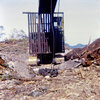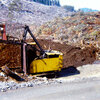-
Thank you for visiting HeavyEquipmentForums.com! Our objective is to provide industry professionals a place to gather to exchange questions, answers and ideas. We welcome you to register using the "Register" icon at the top of the page. We'd appreciate any help you can offer in spreading the word of our new site. The more members that join, the bigger resource for all to enjoy. Thank you!
You are using an out of date browser. It may not display this or other websites correctly.
You should upgrade or use an alternative browser.
You should upgrade or use an alternative browser.
Coast Logger
- Thread starter VI TL
- Start date
Recent pictures?Seaspan Forester at Rennell Sound
If I recall correctly, this tug and barge picked up logs here in Alaska sometime in the '90s.
Quite the barge, very impressive how it handled loading cargo.
VI TL
Well-Known Member
Recent pictures?
If I recall correctly, this tug and barge picked up logs here in Alaska sometime in the '90s.
Quite the barge, very impressive how it handled loading cargo.
These pictures from the late '70s.Recent pictures?
If I recall correctly, this tug and barge picked up logs here in Alaska sometime in the '90s.
Quite the barge, very impressive how it handled loading cargo.
VI TL
Well-Known Member
VI TL
Well-Known Member
VI TL
Well-Known Member
Building dry sort at Rennell Sound. Rock was hauled from a blasted quarry less than a mile away. This rock was used to make the outer walls of the sort. Shale rock, which was on site, was pushed in by dozer to make the inside of the sort and the surface. The shale made a great surface and when it was needed to redo the surface only had scrape off the top and push on another layer of shale. There was shale everywhere near the beach and up the adjoining hills. A lot of the mainline was capped with shale and in the summer created a smooth fast road if it was graded before it got too hard. During the oil crisis in the 70’s there was talk of getting oil from the shale. Never happened.
Attachments
Jumbo
Senior Member
Building dry sort at Rennell Sound. Rock was hauled from a blasted quarry less than a mile away. This rock was used to make the outer walls of the sort. Shale rock, which was on site, was pushed in by dozer to make the inside of the sort and the surface. The shale made a great surface and when it was needed to redo the surface only had scrape off the top and push on another layer of shale. There was shale everywhere near the beach and up the adjoining hills. A lot of the mainline was capped with shale and in the summer created a smooth fast road if it was graded before it got too hard. During the oil crisis in the 70’s there was talk of getting oil from the shale. Never happened.
My only experience with shale was not good. A place called Lake Hannon near Monroe Washington about 1976 or so. The pit for rocking the road was all shale, razor sharp shale. we went through 3-4 tires a day on every single gravel truck out there. There was one day that the loader, all four gravel trucks and the tire truck were all laid up with flats. We finally got the road capped with some crushed and it held up pretty good. Later though, when I was hauling logs out of there, they grid rolled the road and turned up all the shale again. It is pretty discouraging to see the crummy, three log trucks and again the tire truck all laid up with flats. the foreman of the gravel trucks was not too bright and he got hauled over the coals for the stunt. Didn't get fired though, his dad was a well respected man (with good reason) and they didn't want to let him know he had sired a real dud.
VI TL
Well-Known Member
That was a bad experience. The shale at Rennell was somewhat soft and did not hold sharp edges. Traffic created a lot of fines and that formed a hard surface on top when dry. Next best thing to paving or cement for the dry sort. Worked well on the roads also. No flats, at least not from the shale.My only experience with shale was not good. A place called Lake Hannon near Monroe Washington about 1976 or so. The pit for rocking the road was all shale, razor sharp shale. we went through 3-4 tires a day on every single gravel truck out there. There was one day that the loader, all four gravel trucks and the tire truck were all laid up with flats. We finally got the road capped with some crushed and it held up pretty good. Later though, when I was hauling logs out of there, they grid rolled the road and turned up all the shale again. It is pretty discouraging to see the crummy, three log trucks and again the tire truck all laid up with flats. the foreman of the gravel trucks was not too bright and he got hauled over the coals for the stunt. Didn't get fired though, his dad was a well respected man (with good reason) and they didn't want to let him know he had sired a real dud.
camptramp
Senior Member
- Joined
- Aug 13, 2013
- Messages
- 6,302
- Location
- The warm land on Vancuver Island
- Occupation
- Retired Logger Retired Part time pebble hauler
Shale / Slate rock formations can be a blessing or a curse . If its soft and rotten , it turns into ruts in the wheel tracks and grease under the tires to pull adverse grades in rainy season . if its hard at the point of turning into slate , it makes a good road base . If it turns into hard slate it makes a good road , but the tire bill goes through the roof ! I ran an American 599 at Sooke one Winter . The under carriage was getting pretty well worn out . The roads were in an area made of a shale rock formation , the ruts got so bad that when the weather turned cold and froze , to move from landing to the next landing we had to lowbed the loader as the tracks would not stay on it .
Last edited:
skyking1
Senior Member
yes there is a sweet spot with shale. On the dam job, we had some rotten rock. It had too high a sulfur content. There were big veins of it we could dig with an excavator, and it was bad news on roads. We also had yellow pumice from the mountain that was like Captain Crunch cereal. Somehow it got trapped below a soil layer and when i got on it stripping, i could get it out clean. If you put it on a footpath it would always float to the top in winter and stay clean.
VI TL
Well-Known Member
VI TL
Well-Known Member
Born2clearcut
Senior Member
skyking1
Senior Member
Best of luck in your retirement!
VI TL
Well-Known Member
VI TL
Well-Known Member
Pictures not great.
Knight Inlet. Kyuquot Logging (Percy). Pacific truck, TL-6 and Sparmatic. At the head, the Klinaklini River, Percy had four spars. A Skagit tower with a Skagit winch, a Sparmatic with a Skagit winch, a Sparmatic mounted on a truck with a Berger winch if I remember correctly. No operator cab, old school, running board. Also, a Tyee tower with a Tyee winch. This was a great machine, interlock, fast, and the easiest and quickest telescoping tower to raise and lower. Just down the inlet at Sim Creek Percy had two Sparmatics both with the same Skagit winches. Can’t remember if they were IJ-80 or IJ-90. Interlock, three speeds forward and reverse. Good winch, lots of power and could easily rip tail hold stumps out of the ground. TL-6 at Sim. At the head, a TL-15 on tracks, a small American on tracks and a TL-6. Later got a TL-5 hydraulic. Best thing about that machine was that it could travel to settings fast. Pacific logging trucks and Pacific gravel trucks.
Knight Inlet. Kyuquot Logging (Percy). Pacific truck, TL-6 and Sparmatic. At the head, the Klinaklini River, Percy had four spars. A Skagit tower with a Skagit winch, a Sparmatic with a Skagit winch, a Sparmatic mounted on a truck with a Berger winch if I remember correctly. No operator cab, old school, running board. Also, a Tyee tower with a Tyee winch. This was a great machine, interlock, fast, and the easiest and quickest telescoping tower to raise and lower. Just down the inlet at Sim Creek Percy had two Sparmatics both with the same Skagit winches. Can’t remember if they were IJ-80 or IJ-90. Interlock, three speeds forward and reverse. Good winch, lots of power and could easily rip tail hold stumps out of the ground. TL-6 at Sim. At the head, a TL-15 on tracks, a small American on tracks and a TL-6. Later got a TL-5 hydraulic. Best thing about that machine was that it could travel to settings fast. Pacific logging trucks and Pacific gravel trucks.
Attachments
VI TL
Well-Known Member
skyking1
Senior Member
Very cool pictures.
VI TL
Well-Known Member
Looks like flat pads with hydraulic travel motors. Also looks like P&H colors. Love the photos, keep them coming. Any Link-Belt 98 or 108 shovels.
The loader is mechanically driven. What looks like hydraulic travel motors at the front of the tracks are travel brakes. A foot pedal releases the brakes when pressed. Originally, steering was done the normal way by disengaging the jaw clutch on one side and locking the track. It was decided to use the brakes to steer instead of locking the track mechanically. The controller for steering had 5 positions, in the middle both jaw clutches engaged, tracks not dogged, move one position either side would release the jaw clutch on one side and move it once more on that side would dog that track. When they changed to brake steering the way it was to work was to move the controller to disengage the jaw clutch and then take your foot off the brake pedal and that track would brake. I ended up running the machine right after the system was changed. A truck left the landing and a log slid forward so I went down, pulled the log back and on the way back up the hill I had to steer the machine, I moved the controller all the way to the lock position and the machine ran away back down the hill and fortunately ran into a bank. When I told the shop about this, they said to move the controller only one position. I thought they should fix whatever they did so it didn’t happen to someone else. A while later with another person running the machine, walking it up a hill with the assistant foreman behind in a pickup the machine ran away when the operator tried to steer. Foreman had to reverse in a hurry and the machine luckily ran into the bank and not over the side. Machine was fixed.



























